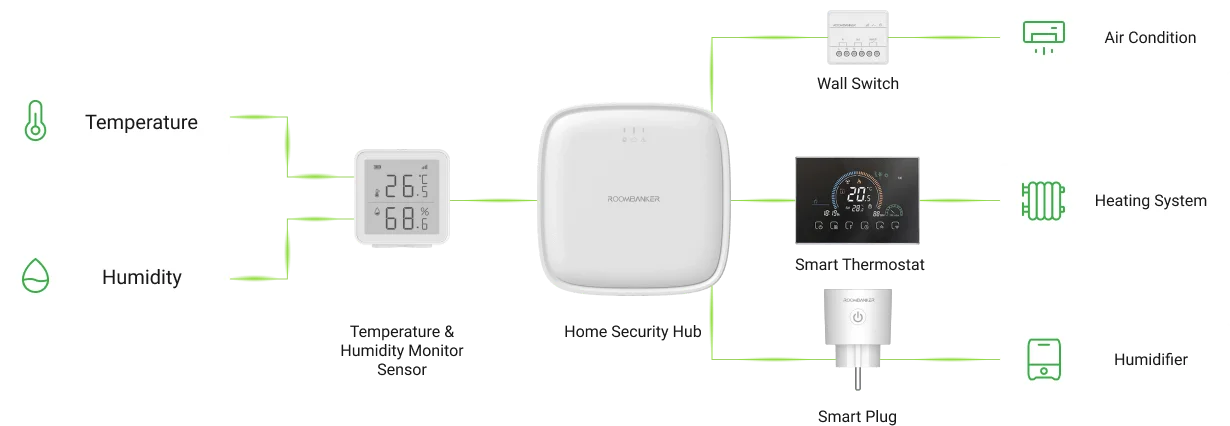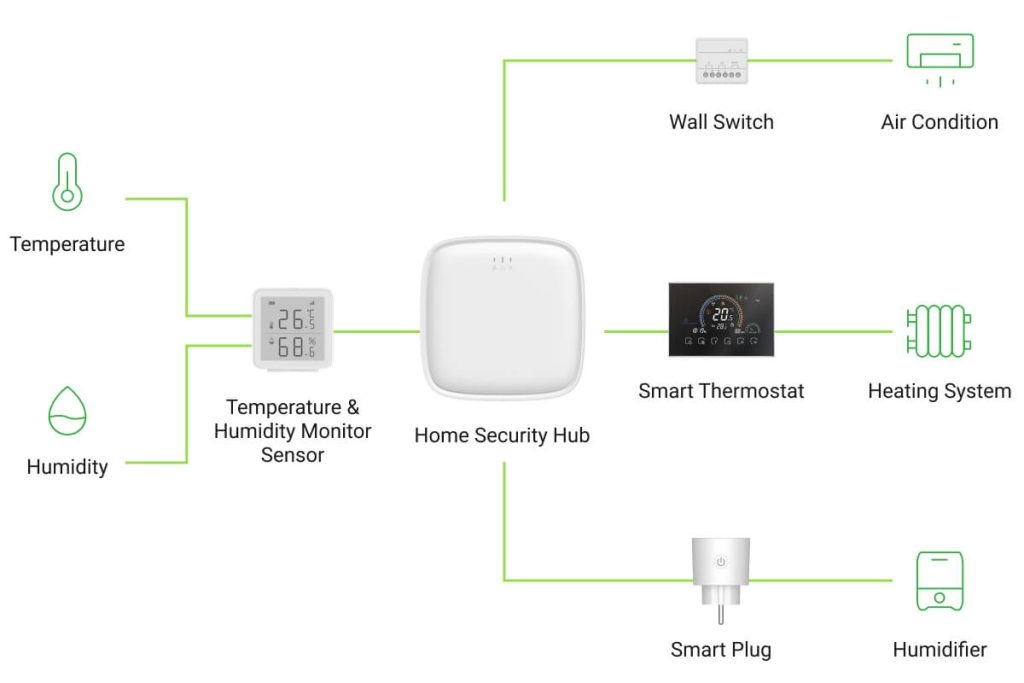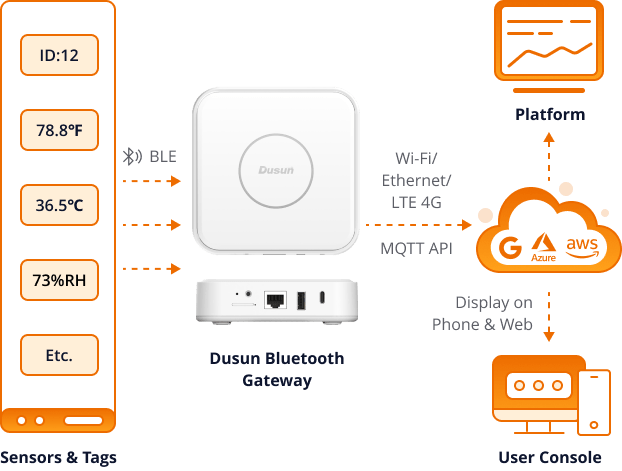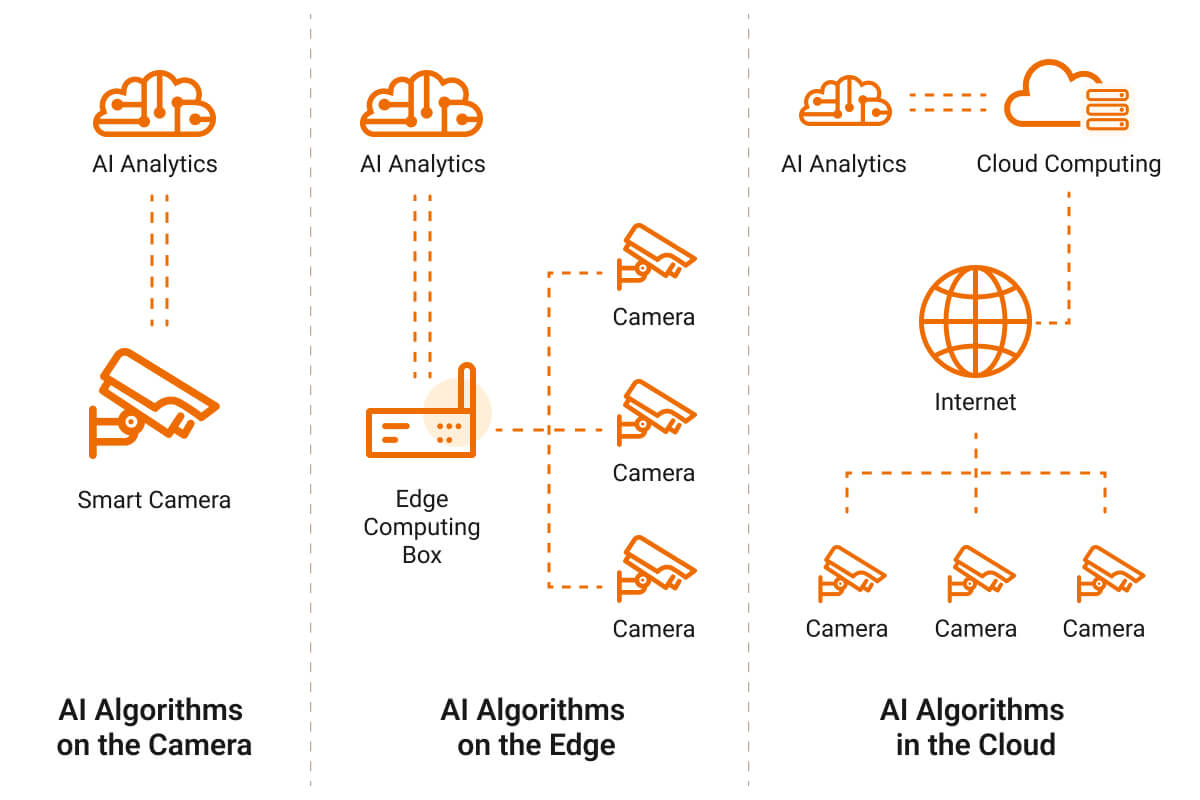Ever heard of EPC? If you’re in Europe, this term shouldn’t be new because it is associated with a property’s energy efficiency. For a property to get its rating, a qualified assessor must inspect it and collect the required data on its energy use and loss.
BLE beacons with temperature and humidity monitoring functions make it easier to monitor the environmental conditions inside the building, which helps to evaluate the efficiency and performance of the HVAC system (energy use), as well as the airtightness of the insulation and window glazing quality (to prevent energy loss due to heating or cooling). This energy-efficiency data makes it easy to determine the property’s rating between A and G.
I’ll explain what EPC is, how renters, landlords, and house buyers can benefit from this grading system, and the IoT devices/technologies needed, including temperature and humidity sensors, to provide the required data. Let’s get started!

What is EPC and How Landlords, Renters, and Buyers Benefit
EPC (Energy Performance Certificate) is an important assessment in the European property market because it provides information about the property’s energy efficiency. This survey focuses on eight primary areas for grading, which are:
- Type and age of the property
- Insulation levels (doors and walls)
- Window glazing quality (double or triple)
- Heating and hot water systems (boilers, thermostats, HVAC, etc.)
- Lighting
- Construction materials
- Floor construction
- Secondary heating systems (if available)
Once the assessment is complete, the home is graded on a scale from A to G, with A being the most energy efficient (requires the least amount of energy to run) and G being the least energy efficient.
The rationale behind this rating is that all buildings in the EU must use little or no energy for heating, cooling, and water heating to reduce carbon emissions and help the region achieve carbon neutrality. Some countries like the UK have made this certification a requirement by law for properties being rented, leased, or sold to make carbon neutrality a reality as soon as possible.
Getting a high EPC rating might seem expensive but the benefits it provides to renters, buyers, and landlords are worth the investment. These benefits include:
Benefits to Sellers
- Enhances the Property Value: Homebuyers are willing to pay a premium for the added benefit of energy efficiency because the bills and maintenance costs of the property will be lower.
- Attracts More Buyers: Despite having a higher value, the home will be more in demand because a high EPC rating is one of the key selling points for such properties.
- Makes Properties More Sustainable: High energy efficiency reduces the property’s carbon footprint, making it more sustainable.
- Enables Compliance with Regulations: The UK has made EPC certificates legal requirements when selling properties, so sellers can avoid hefty fines by getting this certification before putting their homes on the market.
Benefits to Landlords
- Enhances the Property Value: Energy-efficient homes are in high demand, so landlords can make their properties more marketable by investing in double or triple-glazed windows, high-quality insulation, and efficient boilers to get high EPC ratings.
- Increases Rental Income: Since tenants know living in properties with high EPC ratings will result in better living conditions and lower energy bills, they are willing to pay higher rents, resulting in more revenue.
- Reduces Maintenance Costs: Energy efficiency is usually achieved by implementing modern, well-maintained systems that don’t break down often. Therefore, landlords will have lower maintenance costs if they install modern heating systems, HVACs, etc.
- Provides Access to Incentives and Green Mortgages: Landlords who invest in their properties to achieve high EPC ratings are more likely to benefit from government incentives to improve their ratings further. These energy-efficient properties also give them access to green mortgages, which attract lower interest rates and better repayment terms.
- Reduces Void Periods: Even with higher rental rates, properties with high EPC ratings are more in demand in the market, so they will have short void periods or vacancy times, enabling landlords to have a steady, predictable, and reliable income.
- Improves Tenant Retention: The reduced energy bills and comfortable living associated with high EPC ratings will lead to better tenant satisfaction, making them renew their leases and reduce the cost associated with voidness and looking for new tenants.
- Contributes to Environmental Sustainability: Besides the financial benefits, high EPC ratings make properties more environmentally sustainable and help to attain the overall goal of carbon neutrality.
- Enables Compliance with Regulations: Just like when selling, landlords must get an EPC certification, at least in the UK, to comply with regulations and avoid hefty fines before letting.
Benefits to Buyers
- Cost-Savings: The home might be expensive, but the long-term cost savings associated with low energy bills will make it cheaper to maintain.
- Enables Budget Planning: The current EPC rating might not indicate maximum efficiency, so you can plan and budget on the improvements to make to get an A rating after buying the home. Maybe the cost summation of a property with a poor EPC grade and upgrading it might be lower than purchasing one with a high rating.
- Simplifies Comparative Analysis: Purchasing a home is not all about looking at the aesthetics, and EPC ratings provide a basis for comparison based on energy efficiency.
- Reduces Environmental Impact: For environmentally conscious home buyers, a high EPC rating is necessary to ensure the purchase aligns with their values.
Energy Rating Process Explained
In Europe, the energy consumption of homes should be as low as possible, and their energy ratings are assessed through the standardized EPC certification process.
An EPC rating is calculated based on how much energy a property uses per square meter for tasks like lighting, heating, and cooling. It also calculates the amount of energy the property loses via poor insulation.
Certified assessors handle this evaluation process, and they calculate the property’s SAP (Standard Assessment Procedure) score first, then use it to determine the EPC rating from this scale.
- A: 92–100 SAP points, most energy efficient (green)
- B: 81–91 SAP points (green)
- C: 69–80 SAP points (green)
- D: 55–68 SAP points, medium energy efficiency (yellow)
- E: 39–54 SAP points (amber)
- F: 21–38 SAP points (orange)
- G: 1–20 SAP points, least energy efficient (red)
This assessment usually involves these aspects.
- Energy Use: This aspect checks the power consumption levels of the building based on actual data or simulations to determine the efficiency of the lighting, cooling, heating, and hot water systems.
- Building Structure and Systems: It is also important to consider the building’s insulation (roofs, walls, windows, and floors) and its heating and cooling efficiency.
- Building Intelligence: IoT plays a huge role in building intelligence, but this aspect primarily focuses on the building’s ability or readiness to accommodate intelligent services, such as IoT systems.
- CO2 Emissions: EPC gives a measure of a property’s CO2 emissions in tonnes and how it can be reduced using the grading system, because each grade represents a 30–40% difference in emissions. For instance, a B-rated 93 square meter property (roughly 3 bedrooms) emits less than 2 tonnes of CO2 annually. But a D-rated property of the same size emits about 4 tonnes.
After assessment, the certificate is valid for 10 years, after which the property needs a new assessment.
An EPC certificate (E-rated) for a 49-square meter top-floor flat in London that is valid till 2031
IoT Devices Used for EPC Energy Rating
As explained earlier, the EPC rating focuses on two areas, which are energy consumption and energy losses. To determine these figures accurately using actual data (not simulations), the property needs these IoT devices.
- IoT smart gateway to create the sensor/meter network
- IoT smart meters for monitoring energy consumption in real-time and provide the data for analysis
- Energy monitoring systems, such as smart plugs, to monitor the consumption per device
- HVAC system analyzers
- Environmental sensors
- Thermal imagers

How Do Temperature and Humidity Sensors Work in EPC Rating?
Temperature and humidity sensors fall under the environmental monitoring sensor category, and these are critical in EPC ratings because they help to:
Monitor the Indoor Climate in Real Time
By tracking and measuring the temperature and humidity data in the house in real-time, these sensors can help to show the effectiveness of the thermostat or HVAC system. They provide the required control/adjustment signal to these systems and can accurately determine how quickly they condition the indoor environment to the required comfort levels.
Check the Effectiveness of the Insulation
These sensors can also detect if there is uneven temperature and humidity distribution across the rooms in the property, which can be an indication of air leaks or poor insulation. Once the imbalances are detected, EPC assessors can use thermal imagers to get a clearer picture of the situation and give a more accurate certification.
IoT Technologies Used By EPC Energy Rating
Edge Computing
Regular IoT gateways are sufficient for the EPC energy rating end-node network, but smart gateways with edge computing capabilities make the analysis easier and more precise. For instance, with the data streaming in from the environmental sensors, it is necessary to adjust the HVAC or thermostat accordingly to see the effectiveness and efficiency of the heating/cooling system.
An edge computing IoT gateway handles the adjustment automatically to measure the efficiency and relay the data for further analysis in the cloud with zero human interaction.
Wireless Communication Protocols (BLE or ZigBee)
Edge gateways communicate with the sensors and meters installed in the house via wireless protocols like ZigBee and BLE to create the local network and aggregate data from these end nodes for analysis.
Data Analytics and Visualization
All the data streaming in from the end nodes must undergo analysis, usually in the cloud, to help calculate the efficiency and leakage figures needed to determine the EPC class rating.
Artificial Intelligence and Machine Learning
Artificial intelligence simplifies the analytics and visualization process by using ML (training on past data) to give an EPC rating. It essentially relieves the assessor of the manual task of analyzing the data on each house to determine the rating, enabling him/her to assess more properties or become more productive.
HVAC System Analyzers
HVACs are critical in determining EPC ratings, and HVAC system analyzers help to evaluate their performance for diagnosis, fine-tuning, or to ensure compliance. These can be combined with temperature and humidity sensors for more accurate power consumption and efficiency analysis.
Energy Efficiency Simulation
This simulation software can help in predicting the energy consumption of the electrical devices in the property and their environmental performance in different operating conditions, which is critical for the experts to determine the rating.
Final Words
Although EPC is used in Europe, its benefits are primarily geared towards achieving the common good of reducing emissions. Therefore, similar ratings can be adopted globally. So even if you’re living outside Europe, IoT technology can help you greatly enhance your property’s energy efficiency.
And since the EPC certification is a formal part of the European property market (especially the UK), it is essential to invest in IoT technology, specifically BLE temperature and humidity beacons, to monitor interior environments and highlight when the parameters go amiss. This will help property developers, landlords, sellers, and homeowners to fix the issue ASAP and enjoy the benefits of having an energy-efficient home to sell, live in, or rent out to tenants.
Contact us if you need these beacons, as well as other IoT components, such as gateways, to create a seamlessly integrated system for EPC rating assessment.




















